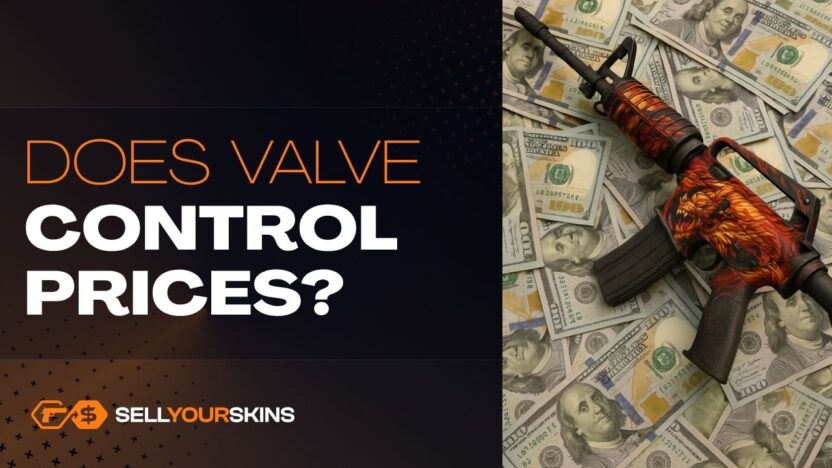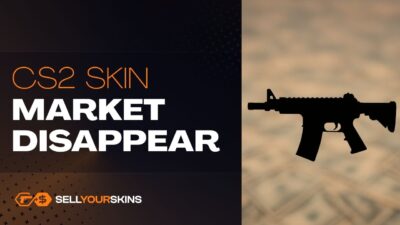The impression that Valve controls skin prices appears every time a single update turns the market upside down. In reality, the situation is more complex: the company influences the market through systemic changes, but it does not control specific valuations. It’s the community that decides how much skins are worth, while Valve’s decisions simply reshape the conditions under which the market operates.
Want to sell your skins for real money? Visit our homepage.
How do Valve’s updates cause price changes?
The recent change to trade-up rules was the best example of how one move can reshape the entire ecosystem. Red skins skyrocketed instantly because they became an important component of the new contracts. At the same time, gloves and knives dropped in price because players started mass producing and selling them, shifting their capital toward skins that “fit” the update. This wasn’t price manipulation – it was the natural reaction of the market to new rules. Valve only altered the underlying mechanism; the community did everything else.
What does Valve actually control?
Valve controls all the foundations on which the skin market is built: drops, cases, the frequency of new collections, and the overall rarity structure. These elements influence supply and the pace at which skins enter circulation. The company also decides which items can be obtained through trade-ups, which skins appear in cases, and how the game’s economy functions. However, this is mechanical control, not economic control. Valve creates the environment, but it does not typically steer player behavior or enforce specific price points.
Why is talking about “price control” an oversimplification?
To truly control prices, a company would have to set minimum or maximum values, artificially increase or decrease demand, or manipulate market data. Valve doesn’t do any of that and has never shown such intentions. The market reacts naturally: when players start wanting a particular skin, its price goes up; when trends or game mechanics shift – the price goes down. Values emerge spontaneously, based on the behavior of thousands of users at the same time.
So who actually determines the value of skins?
Ultimately, it’s the community that sets the real price – through trading, speculation, trends, emotions, and demand for specific collections. Valve influences only the environment in which these processes occur. It’s a bit like a game designer who creates the board for a strategy game: they set the rules, but they don’t move the pieces. That’s why, although it’s easy to blame Valve for price fluctuations, the true engine of the market is the players themselves. Without their decisions, no update would create such effects. Valve controls the backdrop; the community controls the entire substance of the market.



